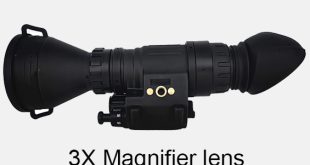Exchange-Traded Funds (ETFs) have revolutionized the way investors gain exposure to the U.S. stock market. These funds, which track a variety of indexes, sectors, or themes, offer a diversified and low-cost way to invest. U.S. stock ETFs are particularly popular for their ability to target specific strategies and risk profiles, making them suitable for both novice and experienced investors. In this article, we’ll explore the various categories of U.S. stock ETFs, helping you understand the different options available and how they align with different investment strategies.
What Are US Stock ETFs?
美股etf are investment funds that pool together capital from multiple investors to invest in a basket of stocks listed on U.S. exchanges. These ETFs are designed to track the performance of specific indexes (like the S&P 500), sectors (such as technology or healthcare), or investment themes (like growth or value). The benefit of U.S. stock ETFs lies in their ability to provide diversified exposure to a particular segment of the market, all while being traded like individual stocks on the exchange.
One of the major appeals of U.S. stock ETFs is their low cost. Most ETFs have lower expense ratios compared to mutual funds, making them an affordable option for investors looking to build a diversified portfolio. Additionally, U.S. stock ETFs are highly liquid, meaning they can be bought and sold throughout the trading day.
Different Categories of US Stock ETFs
Growth ETFs Growth U.S. stock ETFs focus on companies that are expected to grow faster than the broader market. These ETFs generally invest in sectors like technology, consumer discretionary, and biotechnology, where innovation drives above-average earnings growth. Growth ETFs are popular among investors looking for higher returns, but they also come with increased risk. These funds can experience significant price fluctuations, especially during market downturns, as high-growth companies are more sensitive to investor sentiment and broader market conditions.
Value ETFs Value U.S. stock ETFs, in contrast, focus on undervalued stocks that are considered to be trading below their intrinsic value. These companies may have solid financial fundamentals but are temporarily overlooked or undervalued by the market. Value ETFs are generally less volatile than growth ETFs and are often favored by more conservative investors. These funds typically invest in sectors like financials, utilities, and industrials, which tend to offer stability and steady dividends. For those seeking lower-risk investments with potential for long-term appreciation, value ETFs are an appealing choice.
Defensive and Cyclical ETFs Defensive U.S. stock ETFs target sectors that tend to perform well regardless of the broader economic cycle. These sectors—such as consumer staples, healthcare, and utilities—offer products and services that people continue to need, even during economic downturns. As a result, defensive ETFs can provide stability and consistent returns in times of economic uncertainty. On the other hand, cyclical U.S. stock ETFs focus on sectors that thrive during periods of economic growth. These include industries like consumer discretionary, industrials, and materials. While cyclical ETFs can provide higher returns in times of economic expansion, they also tend to be more volatile during recessions.
Global U.S. Stock ETFs Global U.S. stock ETFs offer investors exposure to international markets while still focusing on U.S. companies. These ETFs are often used to diversify portfolios by adding international exposure, reducing reliance on the domestic market. By investing in non-U.S. markets, global ETFs provide an opportunity to tap into growth in emerging markets or developed economies outside the U.S. They can also offer a hedge against domestic risks, such as political instability or economic slowdowns. For investors seeking a broader geographical diversification, global U.S. stock ETFs can be an excellent addition to a well-rounded portfolio.
Sector-Specific ETFs Sector-specific U.S. stock ETFs allow investors to focus on particular industries or segments of the economy, such as technology, healthcare, or energy. These ETFs allow investors to capitalize on trends or themes they believe will outperform in the future. For example, an investor who is bullish on the growth of renewable energy might invest in an energy-focused ETF that includes stocks of companies involved in clean energy. Sector-specific ETFs can be volatile due to their concentration in a single industry, but they also provide targeted exposure to areas of the economy that are expected to grow.
How to Choose the Right US Stock ETF
When choosing a U.S. stock ETF, it’s essential to consider your financial goals, risk tolerance, and investment time horizon. If you’re looking for long-term growth and can handle higher volatility, growth ETFs may be the right choice. On the other hand, if you prefer more stability and lower risk, value or defensive ETFs may align better with your objectives.
It’s also important to consider the economic environment. If the economy is expanding, cyclical ETFs may offer higher returns. Conversely, if you expect economic uncertainty or a recession, defensive ETFs can provide a safer investment.
Sector-specific and global U.S. stock ETFs offer another layer of strategy, enabling investors to focus on particular industries or diversify across international markets. Before choosing an ETF, it’s crucial to evaluate the sector or global exposure you’re looking for and how it fits into your broader investment strategy.
Conclusion
US stock ETFs provide investors with a flexible and cost-effective way to gain exposure to the U.S. stock market. With various categories, including growth, value, defensive, cyclical, global, and sector-specific ETFs, investors can tailor their portfolios to suit their unique investment strategies. By understanding the different types of U.S. stock ETFs and aligning them with your financial goals and risk tolerance, you can build a diversified and balanced investment portfolio. Whether you are a novice investor or a seasoned professional, U.S. stock ETFs offer a wealth of opportunities to optimize your investment strategy.
 USAInsiderToday Latest News, Features, and Culture Coverage
USAInsiderToday Latest News, Features, and Culture Coverage

